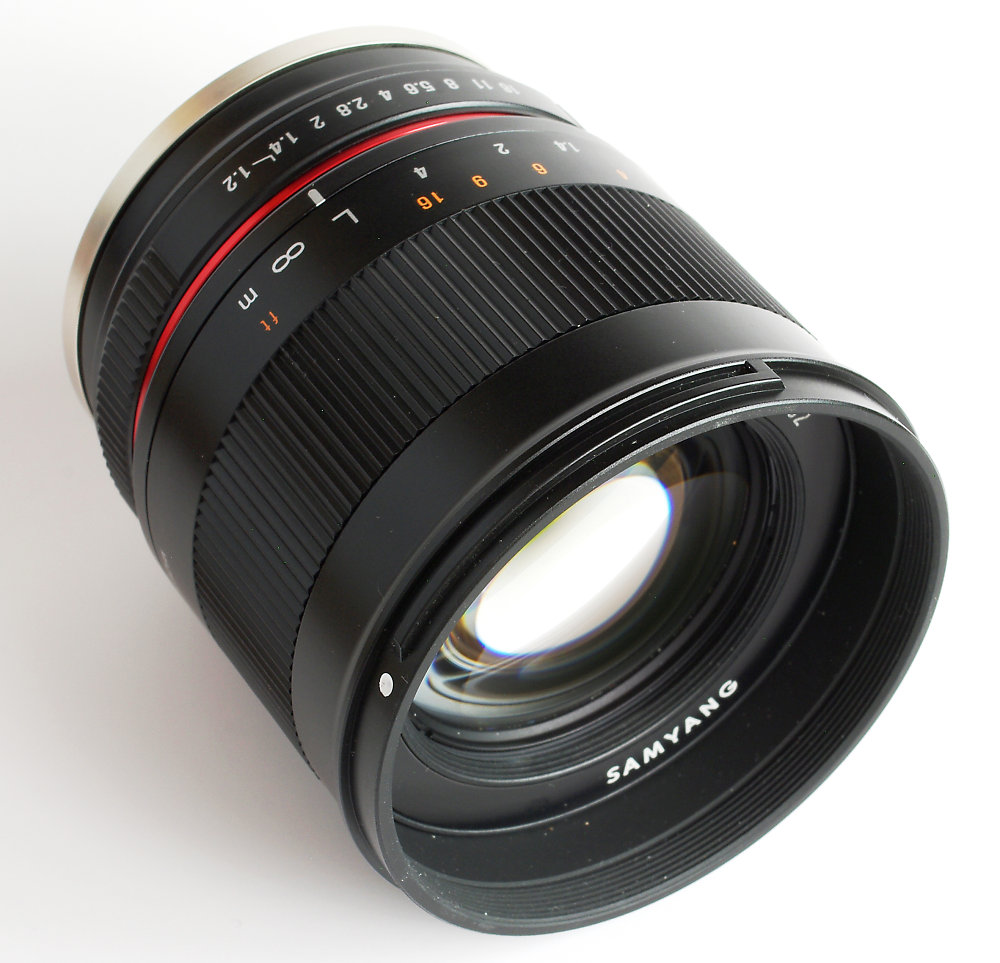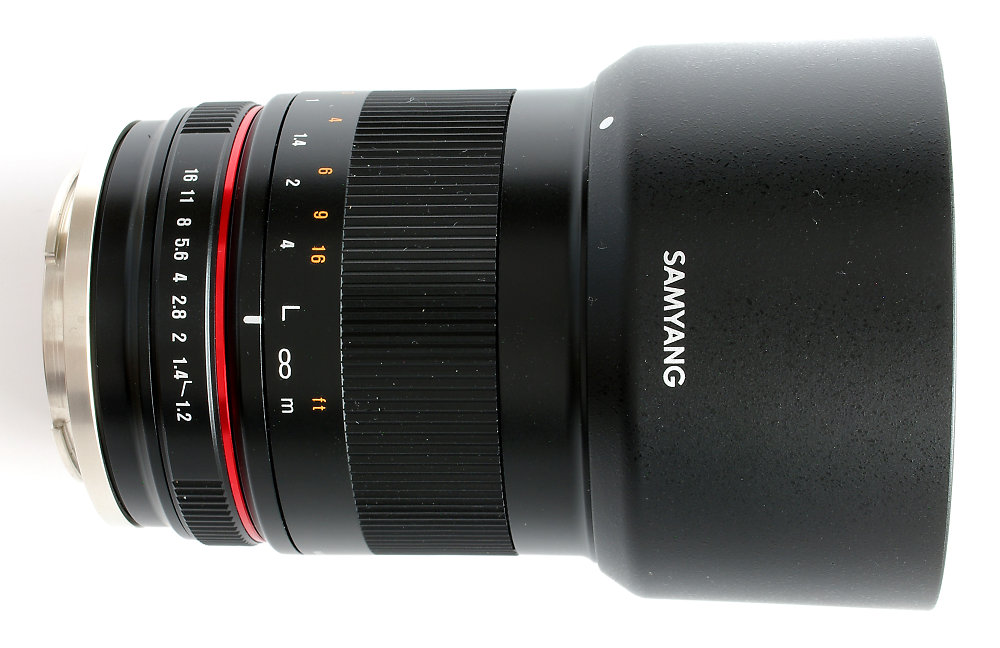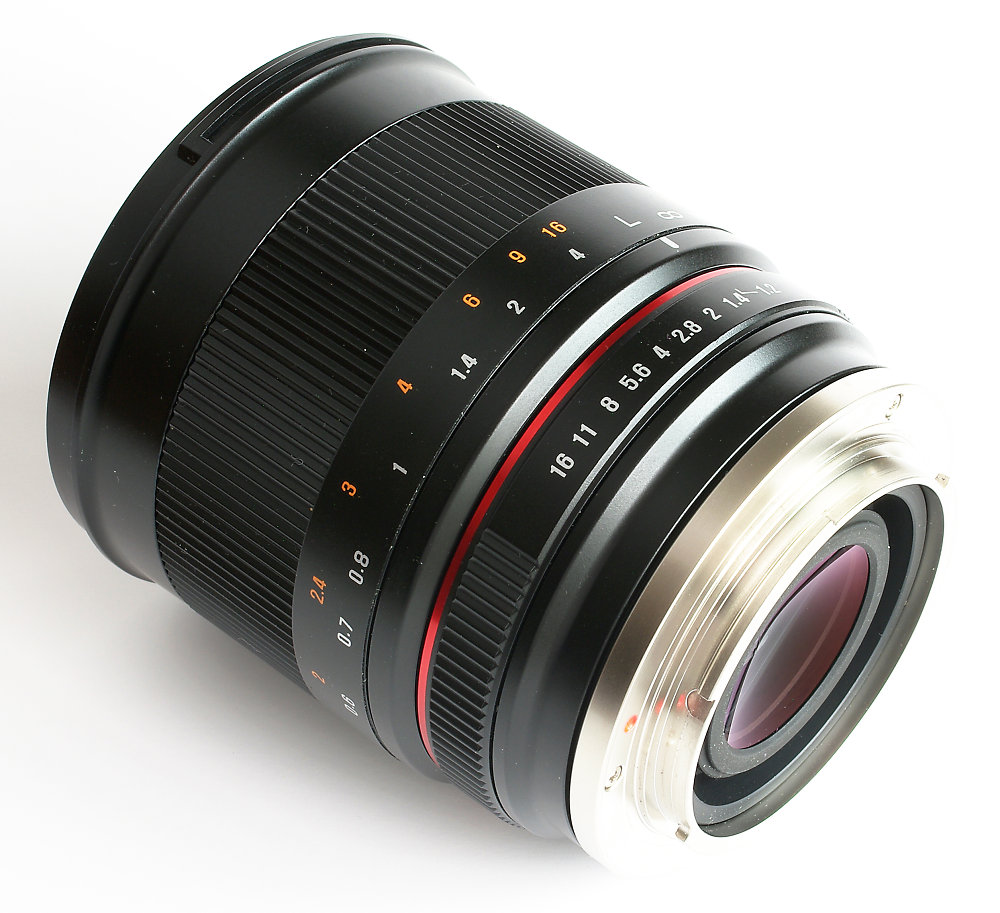Samyang 50mm f/1.2 AS UMC CS Review
Samyang 50mm f/1.2 AS UMC CS Handling and Features
The lens is clearly well-made, with a metal chassis and an outer shell of high-quality polycarbonate. The focusing action is silky smooth, just like the best traditional manual focus lenses. The aperture ring is smooth with light click stops, with no play at all in the action. The mount is a good quality metal mount, this version looking substantial in its design and mounting smoothly onto the Sony Alpha A6000 used for this review, with additional sample images on the Fujifilm X-A1.
This is for APS-C sensors and a wide variety of mounts is available. The lens does not look out of place on the diminutive Sony E Mount body and the balance is good. There is a very well made bayonet circular lens hood provided, to reduce any chance of flare. In any event, the lens is remarkably free from flare.
An f/1.2 lens is very bright indeed and the first question has to be is it necessary. The increase in transmission between f/1.2 and f/1.4 is very small, but maybe the reduced depth of field is more to the point. In practice, it is very difficult to guarantee sharp focus when using the lens at f/1.2. The point of focus is so sensitive that a portrait, for example, leaves only the slightest part of the face sharp, which is maybe a bit too selective, the difficulty being compounded by the movement of the model.
In controlled circumstances, on a tripod, with a stationary subject, the f/1.2 aperture does enable amazing selective focus. It does have creative possibilities, but I suspect for many an f/1.4 lens would be quite fast enough. The bokeh in the out of focus areas is certainly beautifully smooth and creamy.
The lens is totally manual and there are no electronic contacts between it and the camera. This means that there is no EXIF data from the lens, no automatic diaphragm, but equally well it means that depth of field can be directly viewed on the camera screen as we are always at working aperture.
The quality of construction is high, although economies have been made in various ways. For example, the various markings on the lens are surface printed, not engraved and filled. There is no AF. There are no electronics. There is no automatic diaphragm. Everything is manual. Some may consider this to be a breath of fresh air, others may be less tolerant of the extra work that this will entail.
Add your message
Please login here or if you've not registered, you can register here. Registering is safe, quick and free.
photodo Stats
428 MTF tests
74 in-depth photodo reviews
100+ users join each day
Help the lens community by reviewing or rating a lens today via our lens search
Latest Lens Reviews
- Chinon 28mm f/2.8 Vintage Lens Review
- Canon EF 70-200mm f/4L IS II USM Lens Review
- Samyang AF 85mm f/1.4 EF Review
- Sigma 70mm f/2.8 DG Macro Art Review
- Samyang AF 24mm f/2.8 FE Review
- Meike 50mm f/1.7 Review
- Tamron 70-210mm f/4 Di VC USD Review
- Lensbaby Burnside 35mm f/2.8 Review
- Asahi Super Takumar 50mm f/1.4 Review
- Asahi Super-Multi-Coated Takumar 135mm f/3.5 Review



